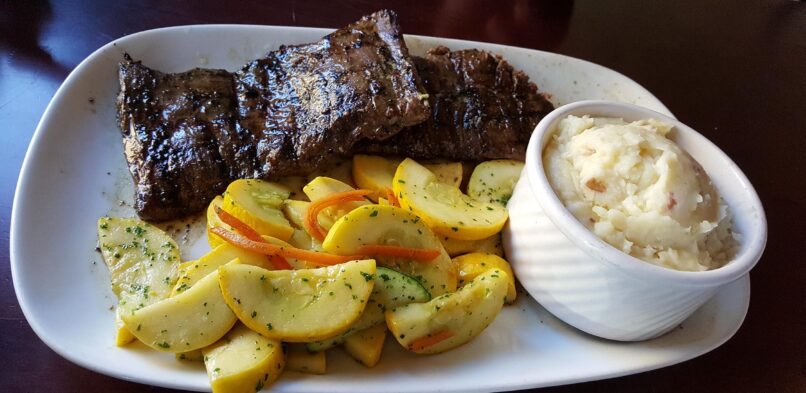Is your steak really going to kill you?

Is your steak really going to kill you?
July 2, 2014 Comments Off on Is your steak really going to kill you?In the book Putting Meat on the American Table, researcher Roger Horowitz scours the literature for data on how much meat Americans actually ate. A survey of 8,000 urban Americans in 1909 showed that the poorest among them ate 136 pounds a year, and the wealthiest more than 200 pounds.
A food budget published in the New York Tribune in 1851 allots two pounds of meat per day for a family of five. Even slaves at the turn of the 18th century were allocated an average of 150 pounds of meat a year. As Horowitz concludes, “These sources do give us some confidence in suggesting an average annual consumption of 150-200 pounds of meat per person in the nineteenth century.”
About 175 pounds of meat per person per year-compared to the roughly 100 pounds of meat per year that an average adult American eats today. And of that 100 pounds of meat, about half is poultry-chicken and turkey-whereas, until the mid-20th century, the chicken was considered a luxury meat, on the menu only for special occasions (chickens were valued mainly for their eggs).
Yet this drop in red meat consumption is the exact opposite of the picture we get from public authorities. A recent USDA report says that our consumption of meat is at a “record high,” and this impression is repeated in the media.
Meanwhile, also contrary to our common impression, early Americans appeared to eat few vegetables. Leafy greens had short growing seasons and were ultimately considered not worth the effort. And before large supermarket chains started importing kiwis from Australia and avocados from Israel, a regular supply of fruits and vegetables could hardly have been possible in America outside the growing season. Even in the warmer months, fruit and salad were avoided, for fear of cholera. (Only with the Civil War did the canning industry flourish, and then only for a handful of vegetables, the most common of which were sweet corn, tomatoes, and peas.)
So it would be “incorrect to describe Americans as great eaters of either [fruits or vegetables],” wrote the historians Waverly Root and Rich ≠ard de Rochemont. Although a vegetarian movement did establish itself in the United States by 1870, the general mistrust of these fresh foods, which spoiled so easily and could carry disease, did not dissipate until after World War I, with the advent of the home refrigerator. By these accounts, for the first 250 years of American history, the entire nation would have earned a failing grade according to our modern mainstream nutritional advice.
During all this time, however, heart disease was almost certainly rare. Reliable data from death certificates is not available, but other sources of information make a persuasive case against the widespread appearance of the disease before the early 1920s.
Here’s yet another of the increasingly public recognitions that atherosclerosis is almost certainly an affliction of agricultural societies who consume huge amounts of cereal grains — and not a byproduct of meat consumption.
It’s worth noting that the increase in such is also correlated with the huge increase in usage of industrial seed oils which simultaneously occurred just due to finally having those seeds available to extract such from so we may be facing multiple factors here. Both, however, point away from meat.
This is tied to increasing awareness that the modern Amish diet is really an excellent example of the (somewhat poorly documented) colonial American diet wherein, to this day, the Amish eat fantastic amounts of animal fats and have low rates of heart disease – to say nothing of their lower rates of obesity, cancer etc.
Encouraging actually…